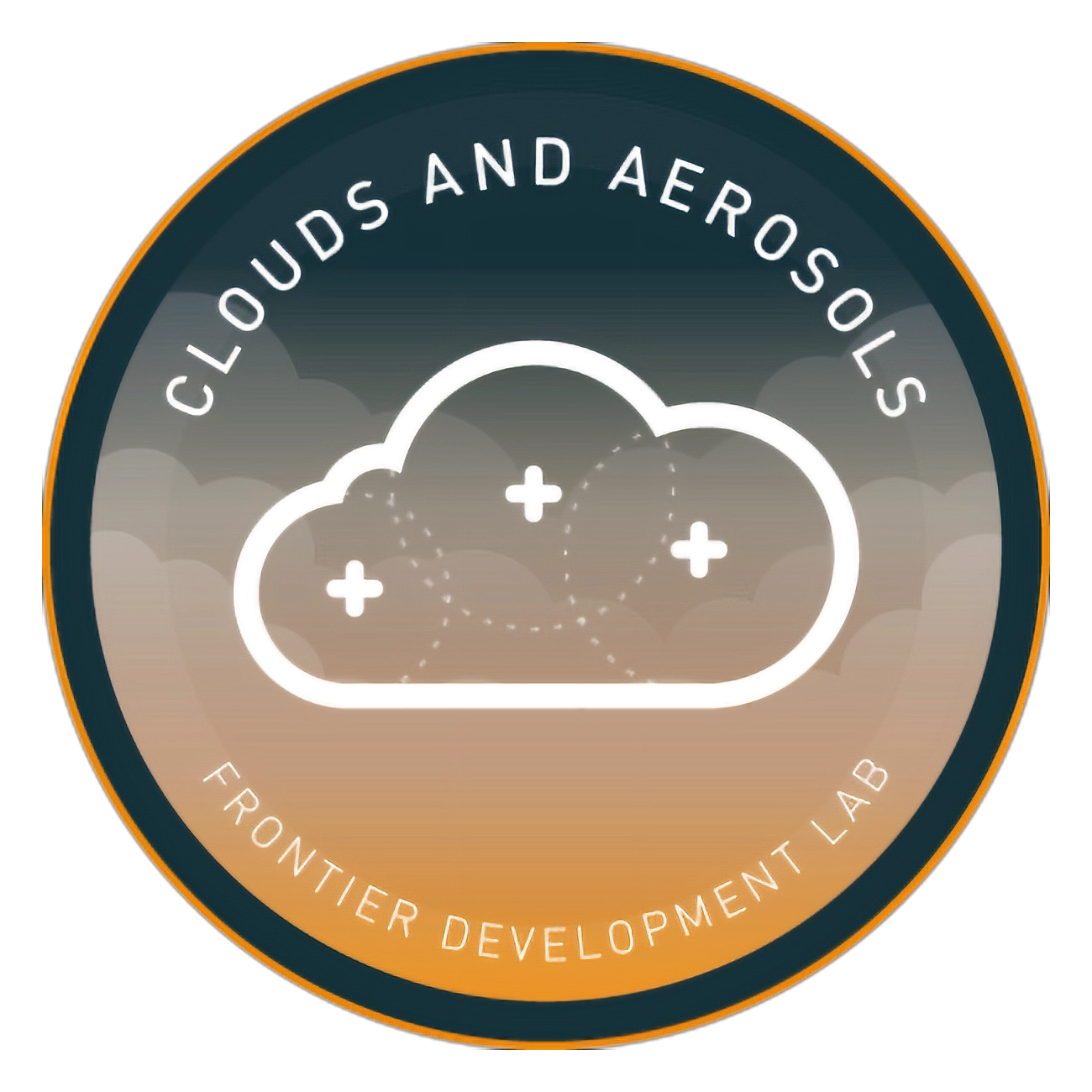FDL Europe is a public - private partnership between the European Space Agency (ESA), the University of Oxford, Trillium Technologies and leaders in commercial AI supported by Google Cloud, NVIDIA and Scan AI. FDL Europe works to apply AI technologies to space science, to push the frontiers of research and develop new tools to help solve some of the biggest challenges that humanity faces. These range from the effects of climate change to predicting space weather, from improving disaster response, to identifying meteorites that could hold the key to the history of our universe.
FDL Europe 2020 was a research sprint hosted by the University of Oxford that took place over a period of eight weeks in order to promote rapid learning and research outcomes in a collaborative atmosphere, pairing machine learning expertise with AI technologies and space science. The interdisciplinary teams address tightly defined problems and the format encourages rapid iteration and prototyping to create meaningful outputs to the space program and humanity.












Clouds and Aerosols
Project Background
Marine boundary layer (MBL) clouds cover a vast area of the world’s oceans. In doing so, they reflect a large portion of incoming solar radiation, and so have a significant cooling impact on the planetary energy budget. In particular, the large stratocumulus cloud decks off of the Western seaboards of North and South America, Australia and Africa have a strong cooling affect due to their great extent (measuring thousands of kms across) and proximity to the equator. Even a small change in the properties of these cloud decks could have significant impacts on future climate change. Clouds are affected by human activity through their feedbacks to climate change, but also directly due to aerosol-cloud interactions (ACI), as illustrated below.
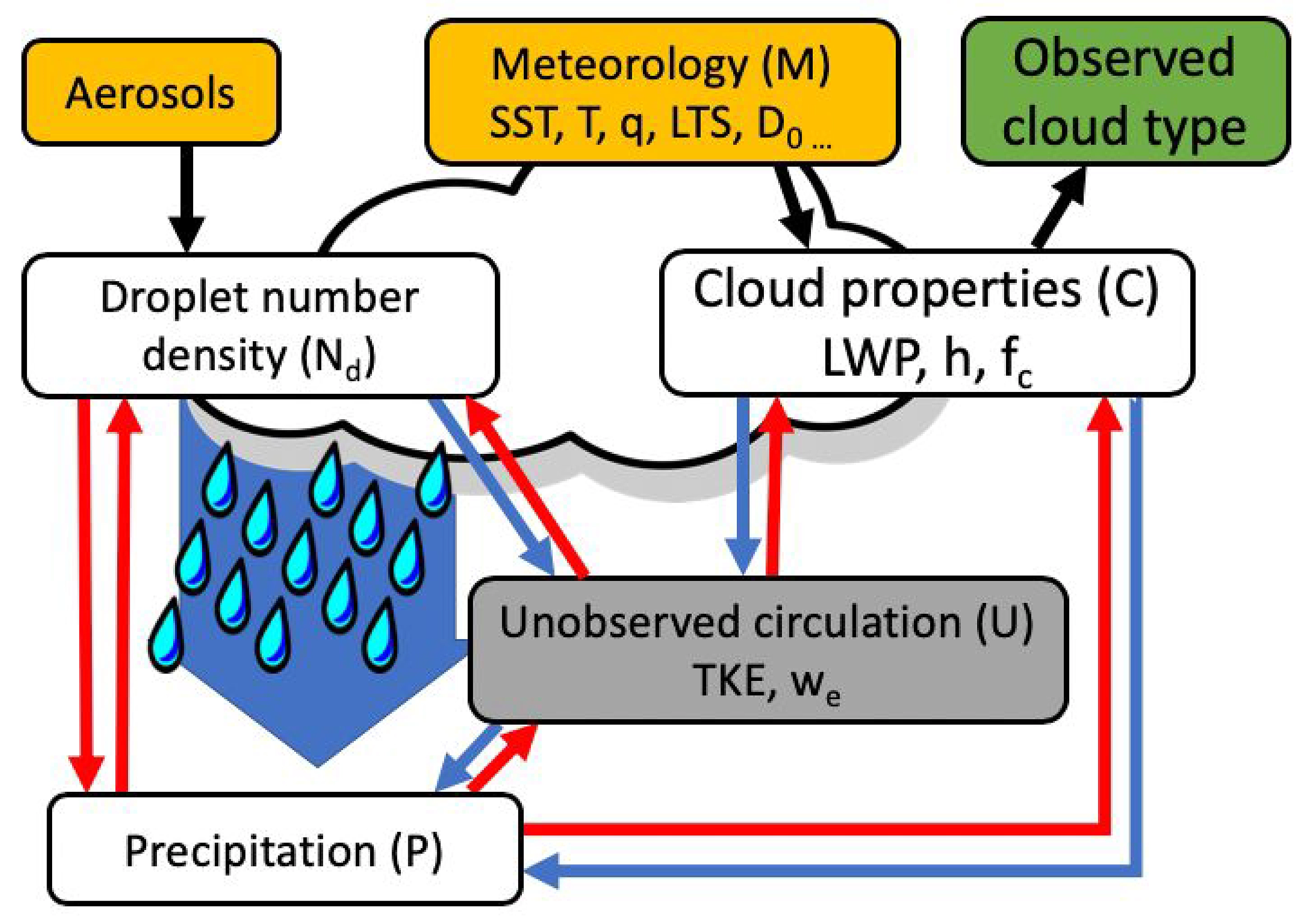
Aerosols (particulate pollutants suspended in the atmosphere) interact with clouds by forming condensation nuclei which cloud droplets form around. An increase in aerosols leads to an increase in cloud droplets, and hence an increase of the reflectivity of the cloud. This causes a cooling effect, which historically has offset a significant portion of global warming due to greenhouse gasses. These changes to cloud droplets may also influence the size and lifetime of clouds through their impacts on precipitation and evaporation processes. These secondary ACI are highly uncertain, but may have significant impacts on the climate.
Project Approach
The team used observations from the European Organisation for the Exploitation of Meteorological Satellites (EUMETSAT) Meteosat Second Generation (MSG) Spinning Enhanced Visible and Infrared Imager (SEVIRI) in geo-stationary orbit over the Southern Atlantic Ocean. This data was combined with European Centre for Medium-Range Weather Forecasts (ECMWF) Re-Analysis, 5th Edition (ERA5) and Integrated Multi-satellitE Retrievals (IMERG) estimates to better understand the aerosol impact on cloud structure through the application of multiple machine learning methods.
They first used unsupervised training methods in the form of the Tile2Vec algorithm and an Information Maximising Generative Adversarial Network (InfoGAN) to produce a single class label for each image patch. These architectures are illustrated below.
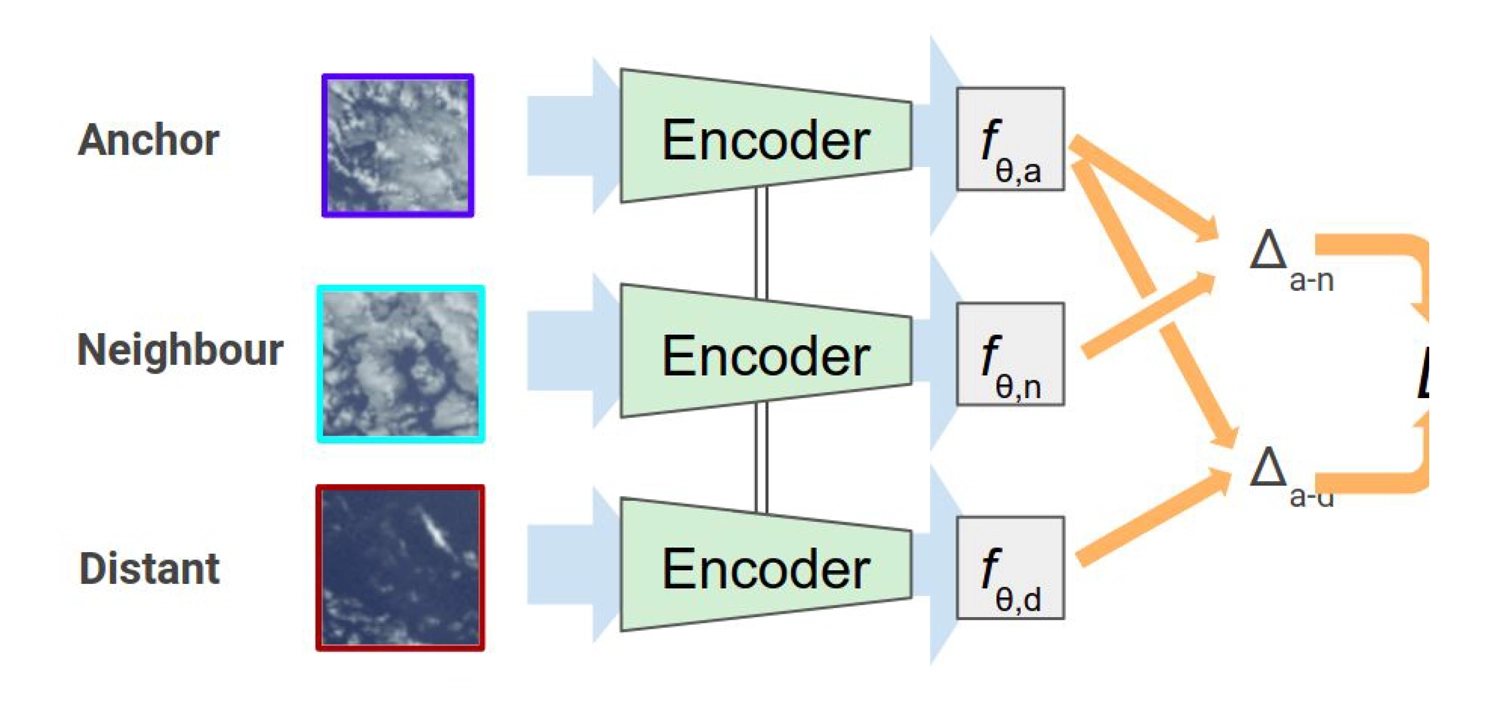
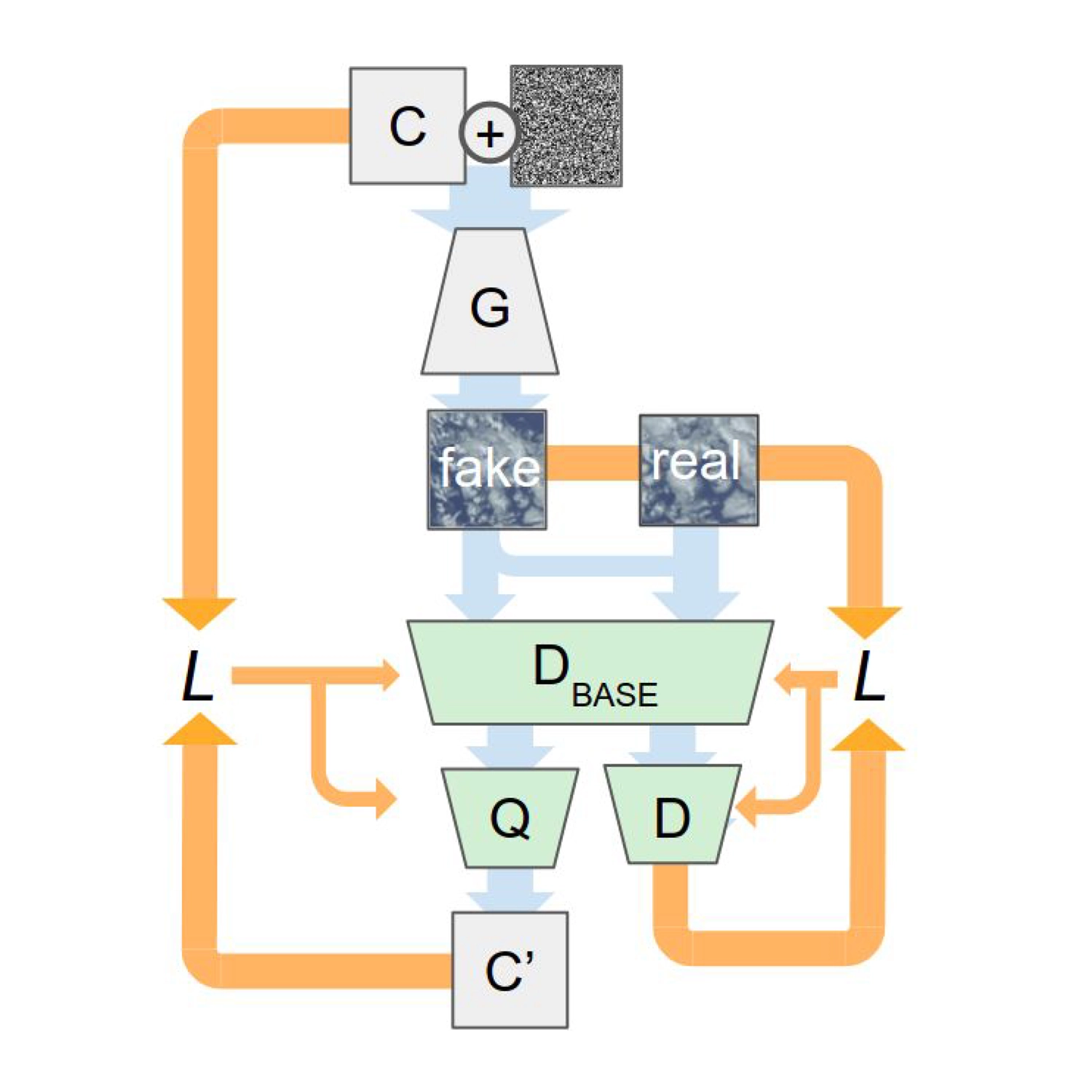
These models were then subjected to a classical machine learning method: the mixture of experts model; in the form of a self-supervised Convolutional Long Short-Term Memory (Conv-LTSM) algorithm to isolate the causal impacts of aerosols on our observed cloud types. To train the model, they took advantage of the temporal nature of the data to better capture processes which might be temporally lagged. Transitions between cloud types may show some hysteresis, and so using input data with multiple timesteps to predict the subsequent time step would capture temporally distributed phenomena, as show below.
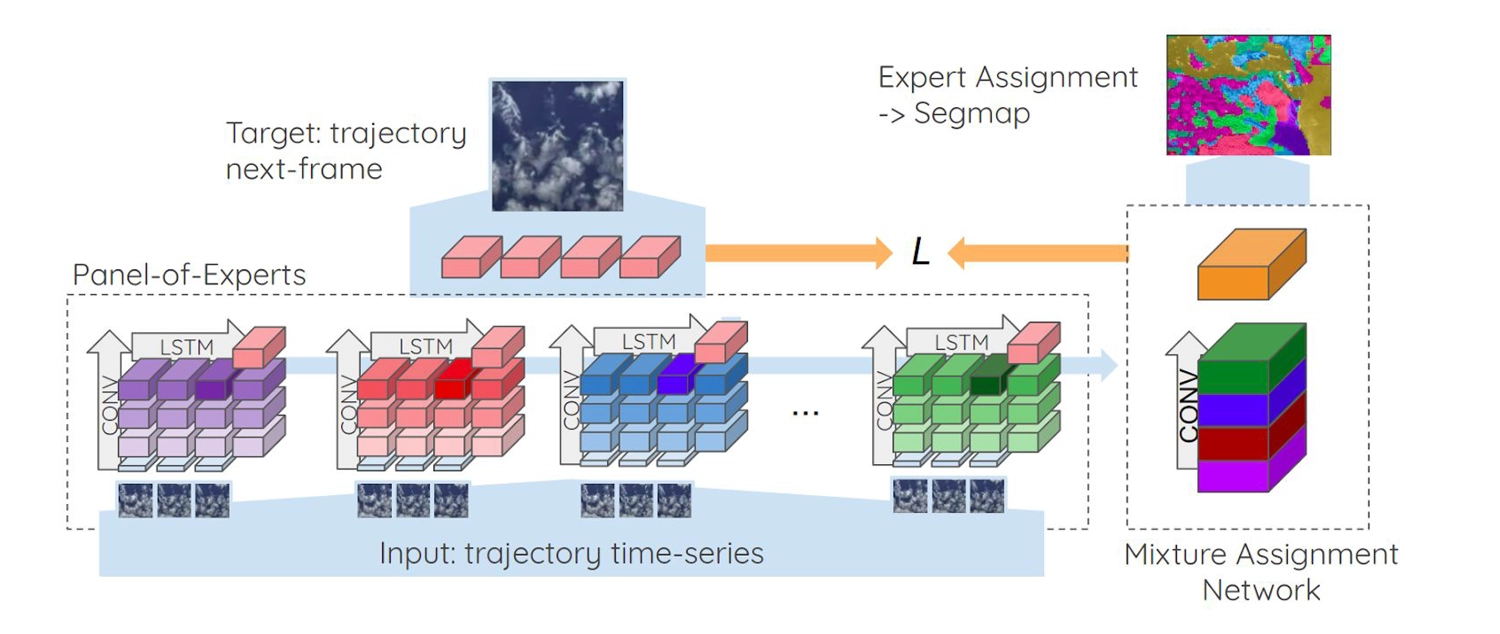
The network allows for the causal effect of droplet number density (used as a proxy for aerosol concentration) on cloud type to be estimated from observational satellite images. Finally, the causal inference model was then developed using a Recurrent Neural Network (RNN) trained on the dataset of over 20,000 time-series of cloud structures.
Project Results
The Tile2Vec representations, visualised using the visible spectra, showed how the user can specify a number of clusters into which to categorise latent space representations. The strength of this method was shown, with clear clusters emerging for different cloud meso-structures. However, there were also clusters which did not clearly show meso-structures, such as cluster 4 and 7 (shown on the left, below), which appear to reflect the availability of visible light, are non-cumulus clouds or patches over land area, or other interference. In contrast, the InfoGAN classifications (shown on the right, below) better capture the variety of cloud meso-structures observed in the visible spectra representations, showing clear sky and closed cells, a variety of open cell structures, and also patches over land.
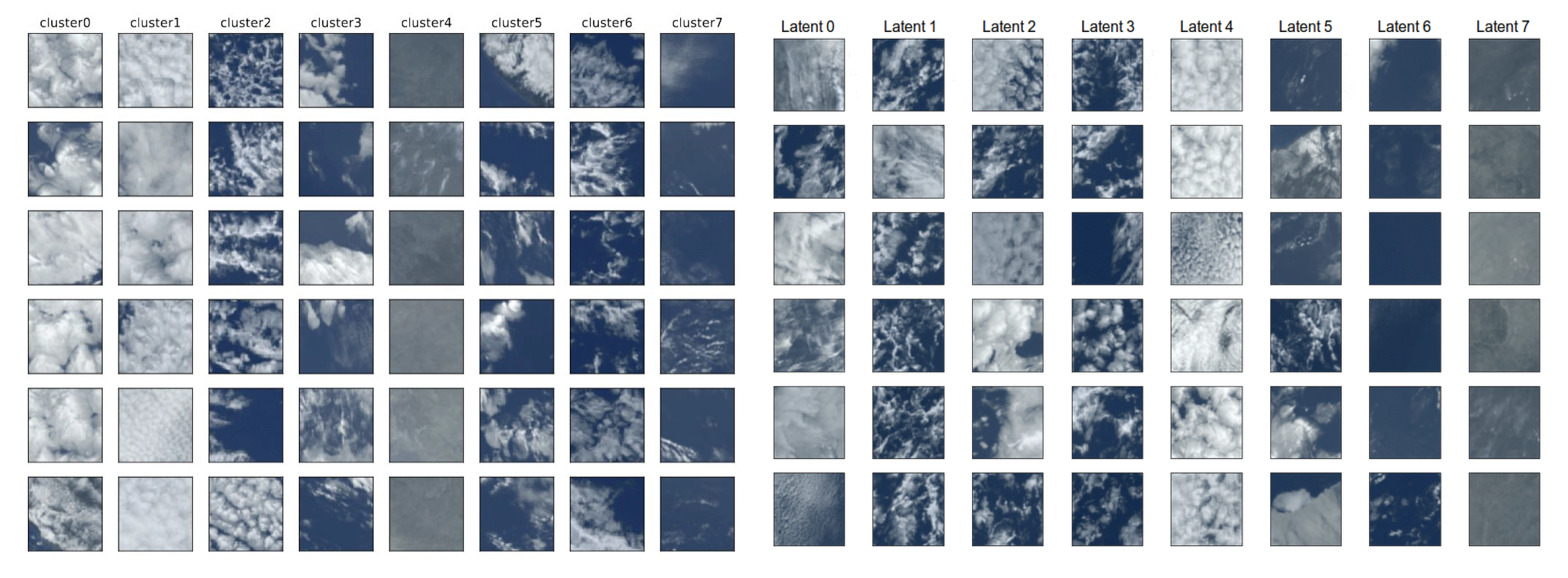
Cloud segmentation analysis was also carried with the resulting maps for both InfoGAN and Tile2Vec implementations shown below with colours representing different classes. With few exceptions, the Tile2Vec model classes were spatially clustered, indicating the anchor-neighbour-distant algorithm used to train the Tile2Vec model had embedded geographic bias in the cloud types. The increased detail captured by the InfoGAN model showed the transition between closed and open cell classes, and offers more differentiation between cloud types.
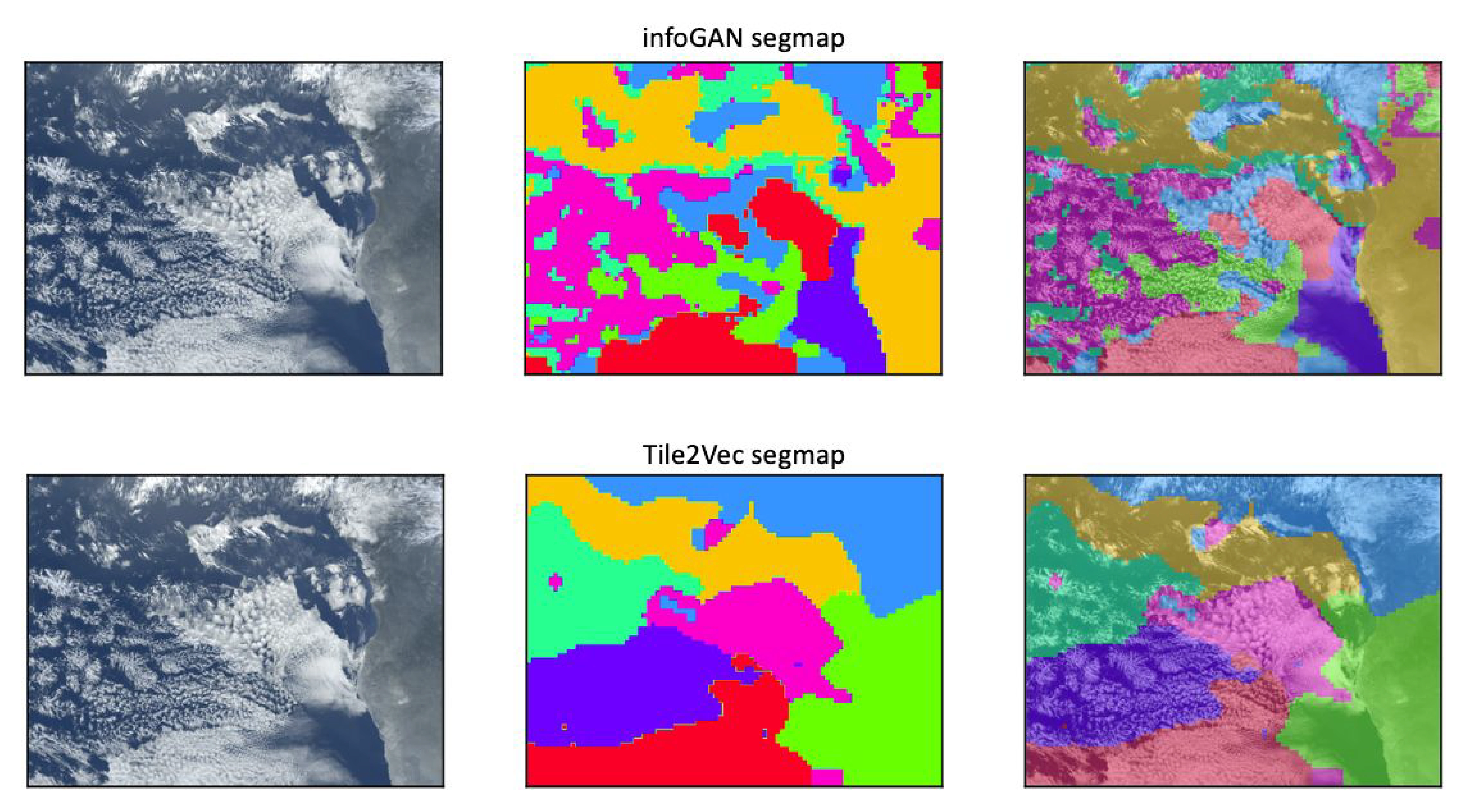
Through a variety of unsupervised and self-supervised methods, and training a causal model using a sequence model, the team has provided early evidence to show that the presence of aerosols, proxied by an increased cloud droplet concentration, leads to longer lifetimes of closed-cell meso-scale structures. The complete pipeline is summarised in the diagram below illustrating its flexibility across platforms and GPU hardware availability.
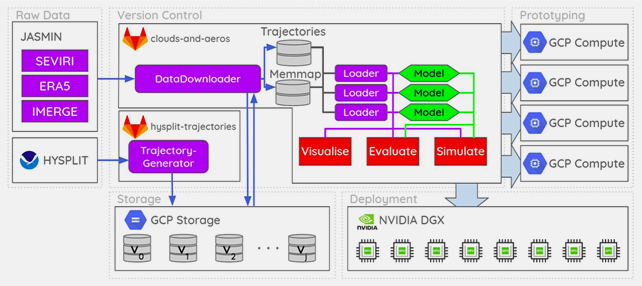
Although the team was able to predict the relative occurrence and lifetime of different cloud types, it was not able to predict how these changes would affect the climate. Further work will involve predicting the radiative forcing impacts of cloud structure changes in order to better understand the climate impacts of aerosol effects on cloud structure and lifetime. You can learn more about this case study by visiting the FDL EUROPE 2020 RESULTS PAGE, where a summary, poster and full technical memorandum can also be viewed and downloaded.
The Scan Partnership
Scan is a major supporter of FDL Europe. As an NVIDIA Elite Solution Provider Scan contributes multiple DGX supercomputers in order to facilitate much of the machine learning and deep learning development and training required during the research sprint period.
Project Wins
Demonstration that presence of aerosols in clouds leads to longer lifetime of closed mesh-structures that could have an impact on climate change
Time savings generated during eight-week research sprint due to access to GPU-accelerated DGX systems
James Parr
Founder, FDL / CEO, Trillium Technologies
"FDL has established an impressive success rate for applied AI research output at an exceptional pace. Research outcomes are regularly accepted to respected journals, presented at scientific conferences and have been deployed on NASA and ESA initiatives - and in space."
Dan Parkinson
Director of Collaboration, Scan Computers
"We are proud to work with NVIDIA to support the FDL Europe research sprint with GPU-accelerated systems. It is a huge privilege to be associated with such ground-breaking research efforts in light of the challenges we all face when it comes to climate change and extreme weather events."
Speak to an expert
You’ve seen how Scan continues to help FDL Europe further its research into the climate change and space. Contact our expert AI team to discuss your project requirements.
phone_iphone Phone: 01204 474210
mail Email: [email protected]
